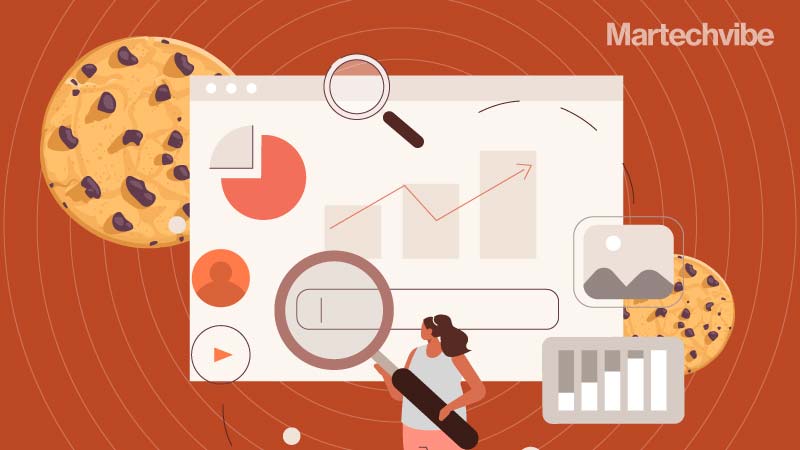Explained: Identity Data
There are two main types of identity data that marketers access. For some time, deterministic and probabilistic identity data have been popular in the digital advertisement circle. In the cookieless era, identity data plays a significant role in building customer profiles for marketers. Do you use the right approach? Building customer profiles is not […]
Topics
What to Read Next
- TripleLift Announces Partnership with Attain to Unify Context and Commerce
- Seedtag Partners with IRIS.TV to Expand Contextual Signals for CTV Targeting
- Magnite, Cognitiv Announce Deep Learning Integration for Real-Time Curation
- Dscout Announces Integration with HeyMarvin
- Comscore Launches Program-Level Capabilities within CCM

There are two main types of identity data that marketers access. For some time, deterministic and probabilistic identity data have been popular in the digital advertisement circle.
In the cookieless era, identity data plays a significant role in building customer profiles for marketers. Do you use the right approach?
Building customer profiles is not always about acquisition or sales growth. It highly impacts the marketing strategy, data privacy, and customer relationships.
So, identifying customers interacting with the brand and delivering relevant experiences require companies to resolve cross-device data to unified customer profiles. And one of the best ways to move forward is through identity data.
What does identity data entail?
It is a collection of data that includes customer details such as name, address, bank account number, health records, and other information that are highly sensitive. While the governments and healthcare companies mainly collect it, other sectors such as retail, banking, and third-party payment processors also collect them, mainly for marketing purposes.
There are two main types of identity data that marketers access. For some time, deterministic and probabilistic identity data have been popular in the digital advertisement circle.
Deterministic identity data
Customer identities are determined based on first-party data, maximising the full potential. Using identity resolution tools, such as the BDEX ID graph, brands integrate new data into their existing customer data history by searching for matches among the identifiers. The deterministic approach focuses on the certainty of consumers’ actions rather than mere assumptions.
Meeting customer expectations with the required information and insights is essential for business growth. And for successful customer interactions and personalised content, marketers leverage this approach throughout the customer journey.
As deterministic graphs link data from various sources, customer service teams can directly access the right information and resolve queries accurately. Hence, deterministic tools allow marketers to improve brand-customer relationships and maintain personalised service.
Although first-party data includes deterministic data, it also includes behavioural and purchasing data. Marketers might assume that first-party data would become easily accessible in the cookieless world, but getting customers to provide the required information is more complicated than ever. One of the best ways to acquire data is through promotions, personalised products, and customer interactions.
A disadvantage of this approach is that it only merges device-level activity when a common identifier is shared and not when it comes from the same customer.
Probabilistic identity data
As the name suggests, it is based on probabilities. The gathered information is pieced together to predict a conclusion using data from a device’s operating system or IP address. In adtech, probabilistic data is used to make the best guess and infer identity.
When a demand-side platform wants to find out if there’s a match between a site visitor and an existing ID, probabilistic methods are used to assign identity.
The main advantage of the approach is allowing marketers to build profiles without personal identifiable information (PII) like email, name, and phone number. It makes it easier to increase the scale of the database, build profiles for top-of-funnel prospects, and extend campaign reach.
However, it comes at a cost – a big one at that – margin of error. Without accuracy, the process can lead to manual identity management for your developers, wasted paid marketing spend, and poor CX.
Probabilistic data requires brands to depend on device IDs and third-party cookies, which are becoming very difficult to collect. Moreover, the effectiveness of a probabilistic data model depends on the quality and breadth of the acquired data.
Which is a better option? It depends.
Probabilistic identity data helps those brands that cannot collect a lot of first-party data. Due to its margin of error, brands use it to deliver a single experience to a broader audience, making little room for bad matches.
When brands are determined to process 1:1 use cases, a deterministic approach is the way to go. Built on linked PII, deterministic profiles allow marketers to communicate with confidence.
But experts strongly advise companies across industries to break away from third-party cookies and develop their first-party databases. A deterministic approach as the core identity data model can help brands build high-quality customer profiles. And once it’s set, brands can always opt for probabilistic modelling on the side for specific use cases.
If you liked reading this, you might like our other stories









































































































